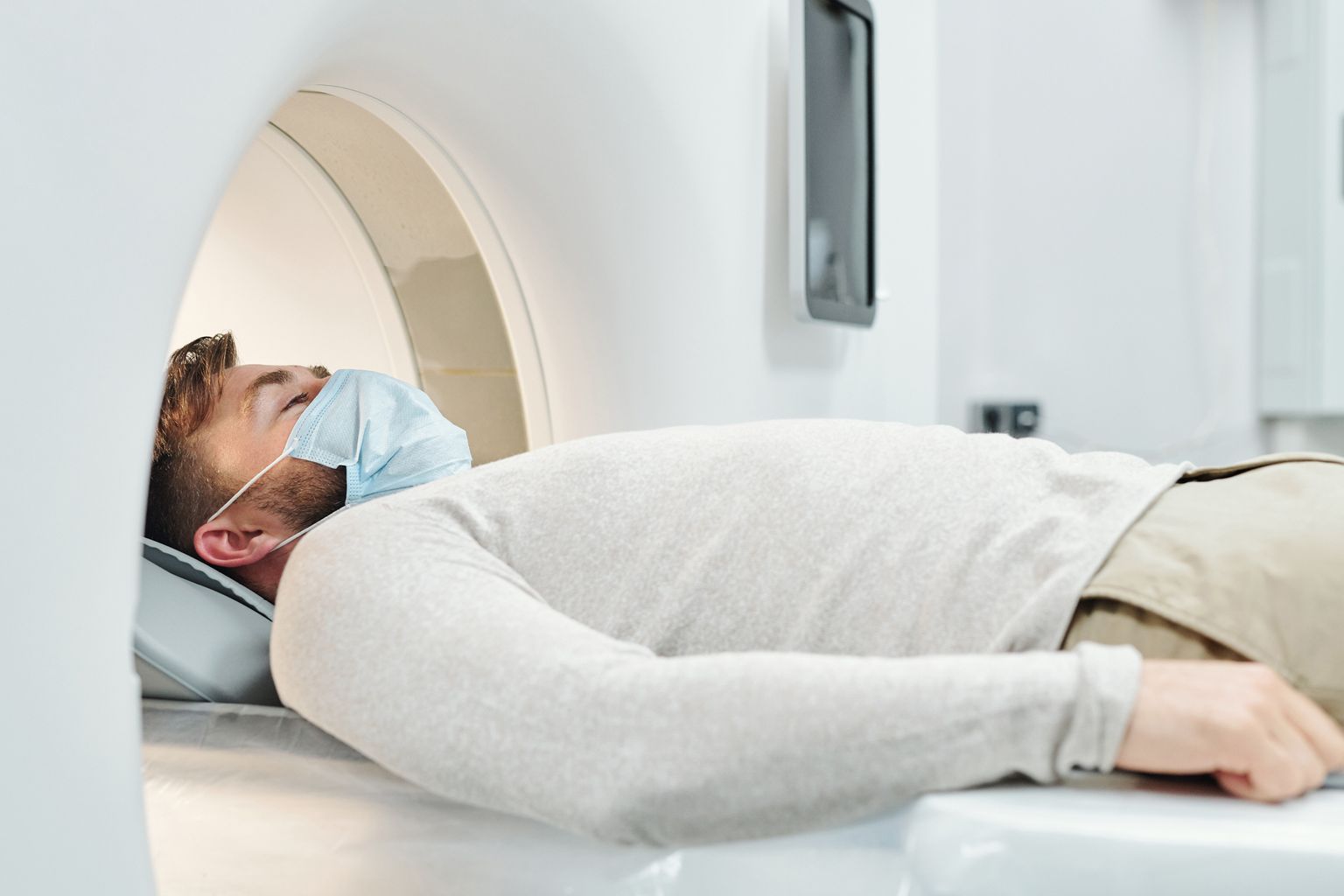Basics
An acoustic neuroma is a rare, benign tumor of the vestibulocochlear nerve. The vestibulocochlear nerve is the 8th of a total of 12 cranial nerves and transmits signals for the sense of hearing and balance. The acoustic neuroma usually arises from Schwann cells of the vestibular part of the vestibulocochlear nerve, which is why the medical name for the tumor is also vestibular schwannoma.
The 8th cranial nerve: vestibulocochlear nerve
Vestibular schwannomas form from uncontrolled growth of Schwann cells in the nerve sheath of the vestibulocochlear nerve. The nerve is a so-called twin nerve, i.e. it has two different parts. One part (auditory nerve, cochlear nerve) is responsible for the sense of hearing, while the other part (vestibular nerve) is important for the sense of balance. Both nerves emerge close to each other in the brain stem and run via the cerebellopontine angle to the inner ear. As the acoustic neuroma usually forms from the Schwann cells of the vestibular nerve, the tumor can either grow laterally on the vestibular nerve or separate the two parts of the mixed nerve, so to speak. The type of tumor growth has a decisive influence on the type of therapy and the prognosis.
Slow growth in the cerebellopontine angle
The tumor grows in the internal auditory canal and often slowly expands from there into the cerebellopontine angle. This is why the tumor is also known as cerebellopontine angle tumor. If the tumor is still located in the bony auditory canal, its location is also referred to as "intrameatal". If the tumor grows into the cerebellopontine angle - a space to the right and left of the brain stem - its location is also referred to as "extrameatal". In most cases, this expanding growth leads to increasing pressure on the vestibular nerve and the cochlear nerve. As the disease progresses, the trigeminal nerve (5th cranial nerve) and the facial nerve (7th cranial nerve) can also be affected. Symptoms that can occur in the course of an acoustic neuroma include unilateral hearing loss, dizziness, tinnitus and paralysis of the facial nerve. The function of other cranial nerves and the brain stem can also be impaired.





